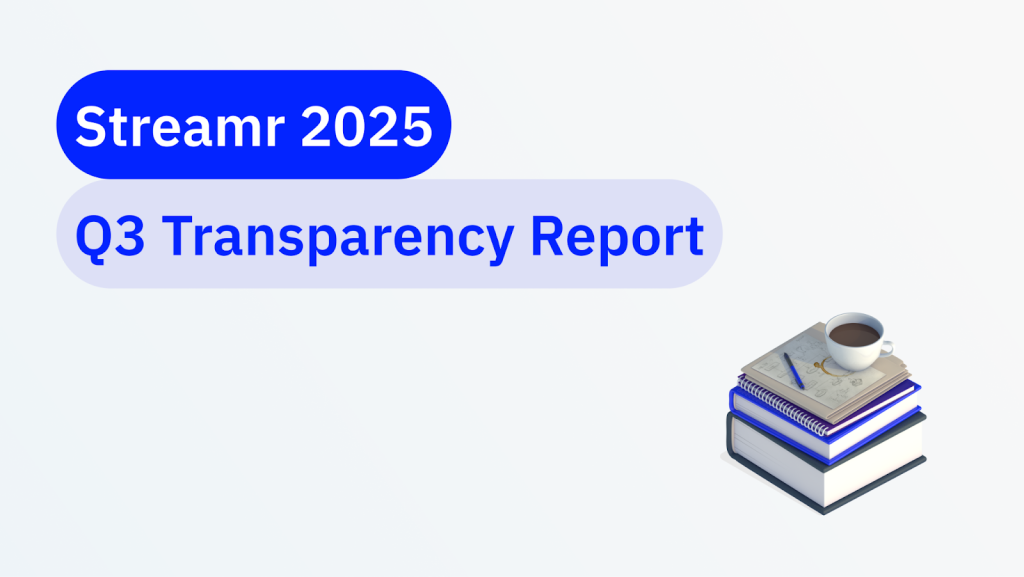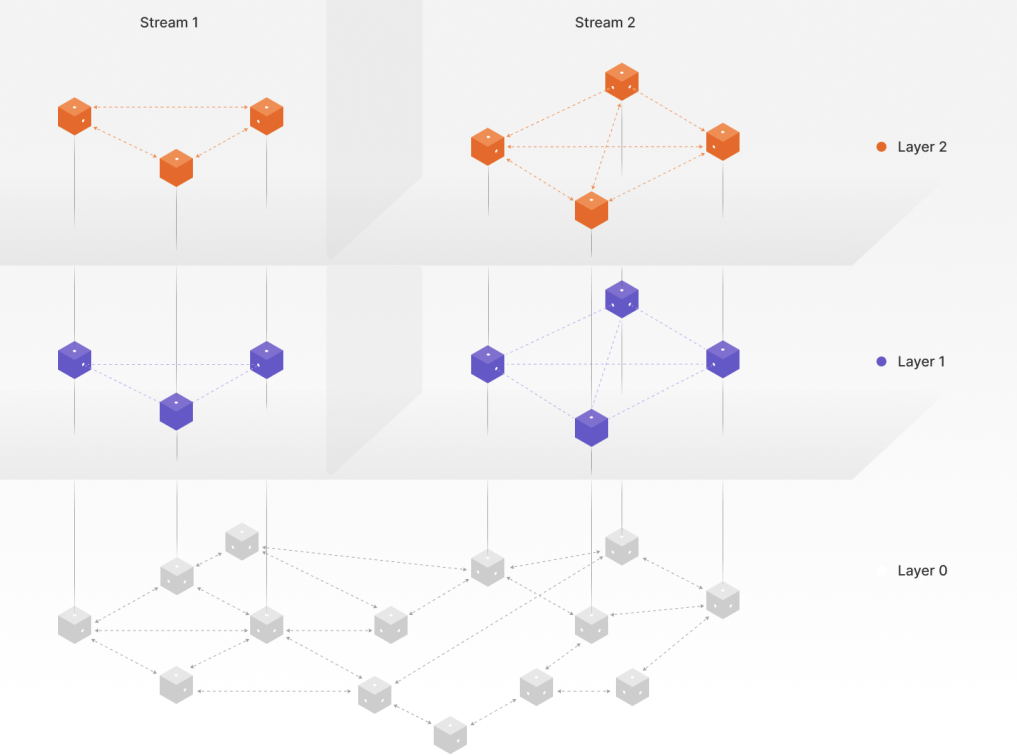Streamr, a pioneer in decentralized data transport, is excited to announce the launch of StreamGPT—an autonomous AI agent that utilizes the latest GPT models to generate insights from live data streams on the Streamr Network.
Table of Contents
Features
- Generative stream intelligence: This AI-driven system is capable of generating stream features such as detailed text descriptions, images and insights for each stream it encounters.
- Autonomous RAG: StreamGPT interfaces with the Streamr Network Indexer and makes live stream subscriptions. This Retrieval-Augmented Generation (RAG) gives the GPT necessary context and substance to generate new intelligence about each stream.
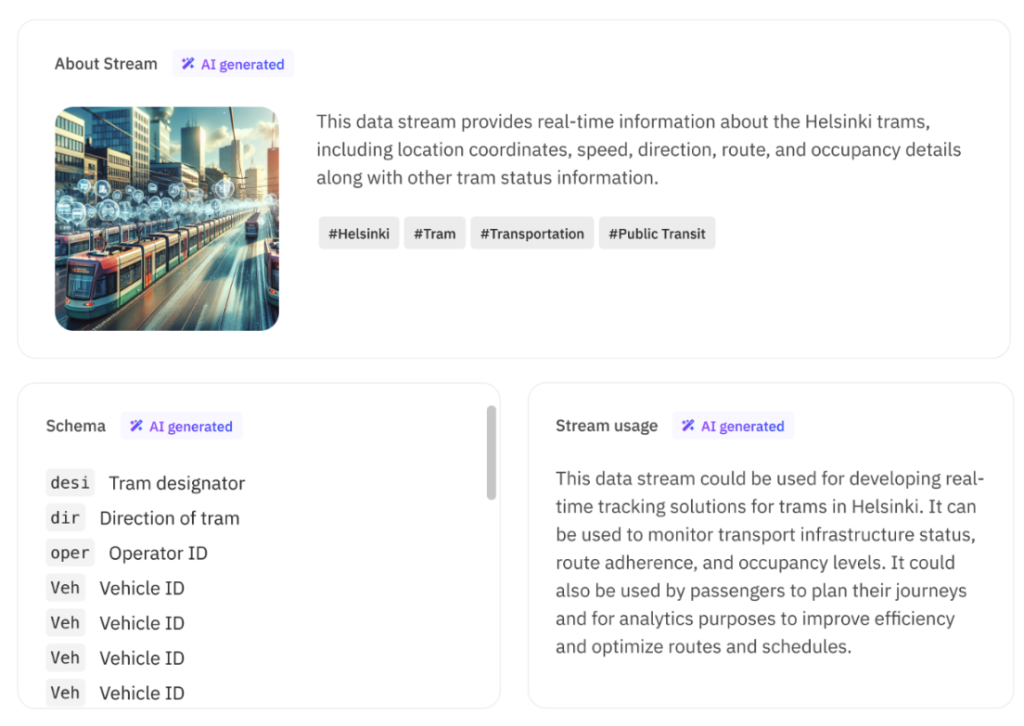
How it works
StreamGPT is made up of three parts, The RAG (feeder circuit), the inference generator and the content distribution.
Part 1: Retrieval-Augmented Generation (RAG)
StreamGPT is a NodeJS application that connects to the Streamr Network Indexer. The Indexer scans the Streamr Network and takes samples of streams, just like Google crawls the Internet to snapshot websites. The Indexer is necessary since the Streamr Network is decentralized, like the Internet.
This process generates a stream queue, which is ranked and sorted, based on the metrics gathered from the Indexer, prioritizing streams with highest message throughput. Stream subscriptions are then created with the Streamr SDK, and if the stream is public, a data point is collected and passed forward to the AI model for processing. If the stream is private then just the stream ID and stream description are sent forward.
Part 2: AI model inference
In this step, an AI assistant thread is started—StreamGPT asks for insights and features about the given stream. That AI generated response is then used to help generate an image for the stream. Once the generations are completed, the StreamGPT agent has access to detailed text descriptions, an image, and other relevant stream features such as the schema and even ideas for how the stream can be used inside third party applications.
Part 3: Distribution
The generated text is stored locally, and the generated images are uploaded to IPFS. The generated content is now accessed by the Streamr frontend (The Streamr Hub).
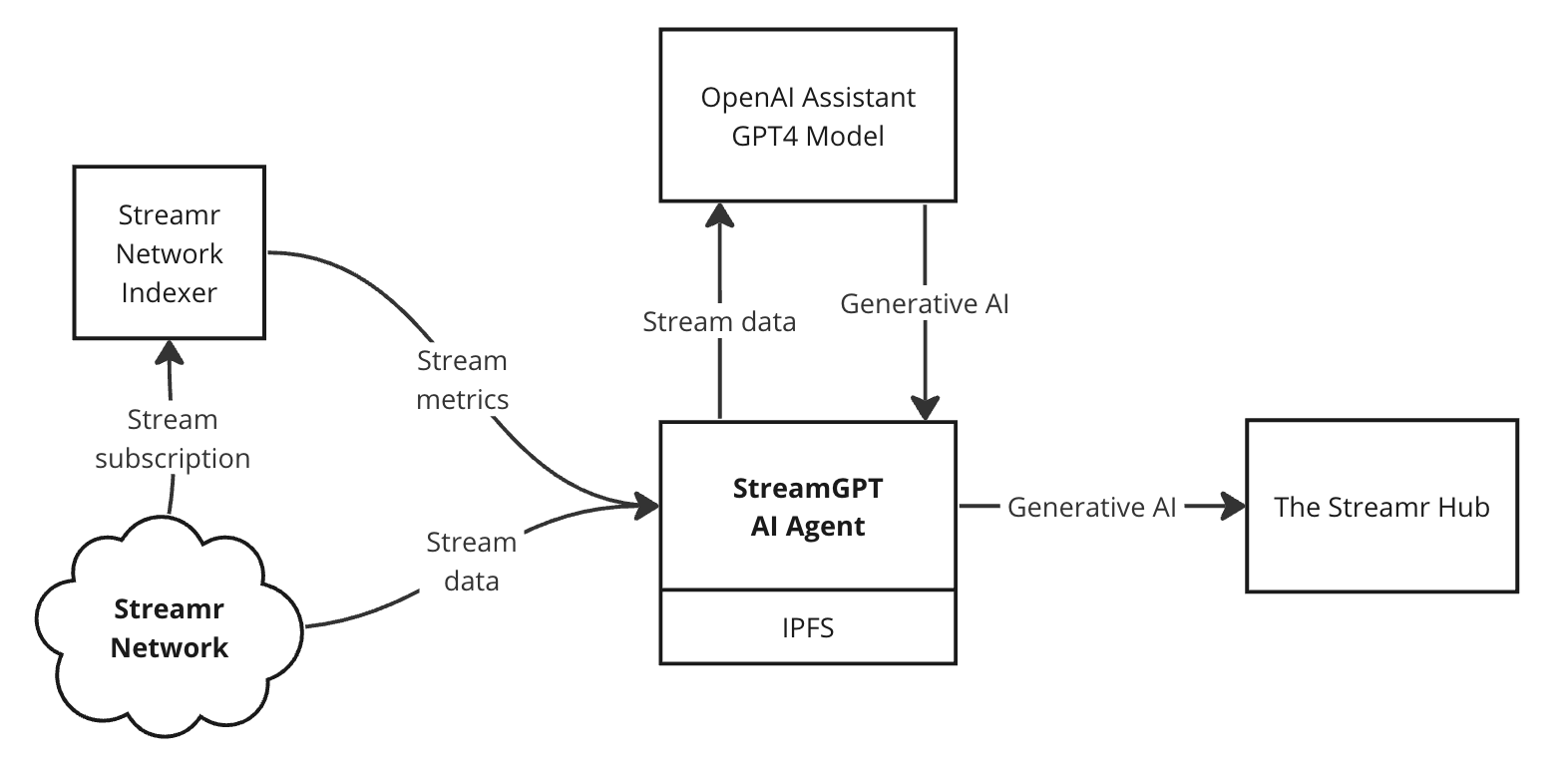
Try it out!
All you need to do is create an open data stream (publically subscribable), and push streaming data through it. Behind the scenes, the Network Indexer will sample the stream, and the StreamGPT will be scheduled to it– this process takes about a day at most currently.
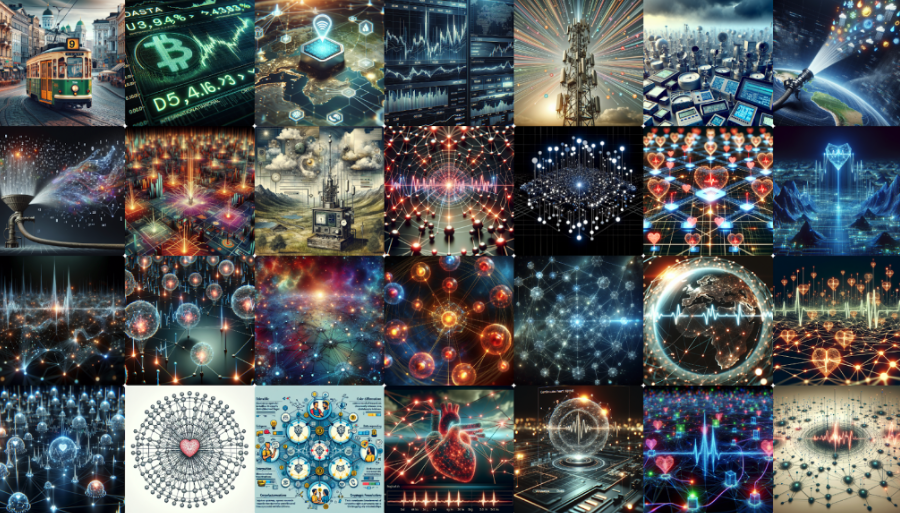
Stream examples to explore:
What comes next
This first release of StreamGPT works with just a single stream data point—it’s easy to believe in a future where AI agents subscribe to continuous streams of data and generate continuous streams of generative intelligence in return. For example, real-time transcriptions of live video, from one stream to another, over Streamr.
Streamr invites developers, data scientists, and enthusiasts to explore the potential of this new feature by using the Streamr Hub, exploring streams and to create your own StreamGPTs. This is an exciting first step, but it’s only just scratching the surface of what’s possible with Streamr powered AI.




